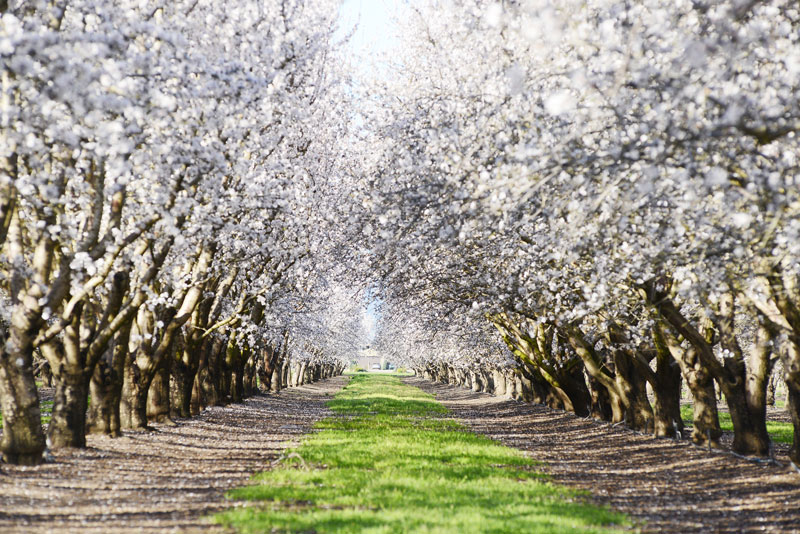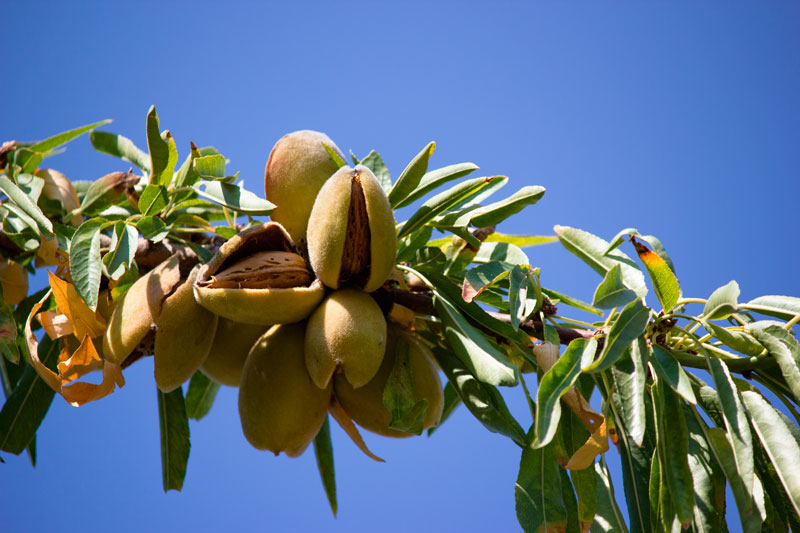“Almonds are hoarding all the water!”
“One little almond takes a whole gallon of water!”
“Blame the almond!”
Drought conditions have brought about the interest in new research and studies surrounding water usage on farms; a few of which have brought to light just how much water it takes to grow California’s #1 cash crop: almonds. Nearly all of the almonds grown in the U.S. and 2/3 of the world’s almond supply stem from California. That’s a lot of almonds.
 And the argument isn’t easy to ignore: California’s water shortage is making everyone look at their own water usage. When you hear that one little almond takes a whole gallon of water, suddenly that afternoon snack makes a handful look like tubful. But these claims aren’t all they’re cracked up to be. There are plenty of other sources draining the water supply (livestock, for one) on a much larger scale than almonds. On top of that, almond orchards are actually doing good than harm, in terms of the climate.
And the argument isn’t easy to ignore: California’s water shortage is making everyone look at their own water usage. When you hear that one little almond takes a whole gallon of water, suddenly that afternoon snack makes a handful look like tubful. But these claims aren’t all they’re cracked up to be. There are plenty of other sources draining the water supply (livestock, for one) on a much larger scale than almonds. On top of that, almond orchards are actually doing good than harm, in terms of the climate.
Almonds are masters of carbon sequestration, or capturing CO2 from the atmosphere and keeping it in the soil. Perennial crops, like almonds, have the added benefit of staying in the ground year-round, with a standard almond tree lasting about 25 seasons. Those roots keep carbon buried in the soil instead of filtrating it out in the air.
In an analysis of the almond industry, a well-managed farm can capture and bury more carbon than is emitted, provided all shells, hulls and other biomass produced by nut farming were burned for a renewable energy resource. Essentially, almonds are providing more value than it is costing, making it an essential crop to our environment.
 Agriculture in general plays an important role in climate change. Greenhouse gasses emitted into the atmosphere from agriculture is a major culprit in our environment right now, responsible for 14% of greenhouse emissions. If the whole world’s farmland doesn’t take into consideration greenhouse emissions, the rise in global average temps will doom us.
Agriculture in general plays an important role in climate change. Greenhouse gasses emitted into the atmosphere from agriculture is a major culprit in our environment right now, responsible for 14% of greenhouse emissions. If the whole world’s farmland doesn’t take into consideration greenhouse emissions, the rise in global average temps will doom us.
But deliberate, careful planning could have a positive effect, and actually help correct the global climate, as already proven by the mighty almond. Many famers have taken this into account and are starting to utilize concepts that cut back on carbon emissions while still reaping the bounty of their harvest.
Yes, almonds need a lot of water. But, their persistence as a crop is crucial to California’s agriculture and environment, currently and for the future. Thanks, almonds!
Want more health hacks and wellness insights? We got you covered. You'll also receive a code for 15% off your first order!

